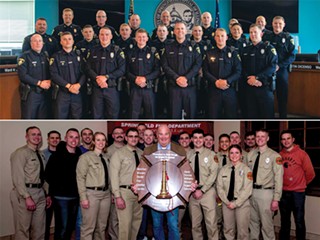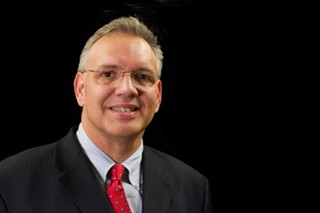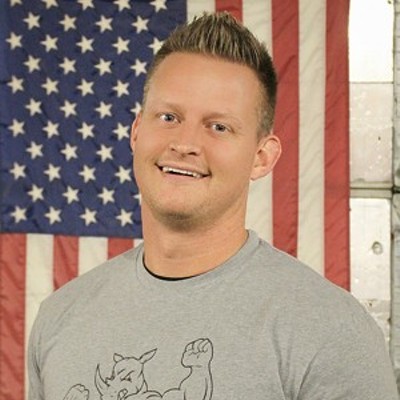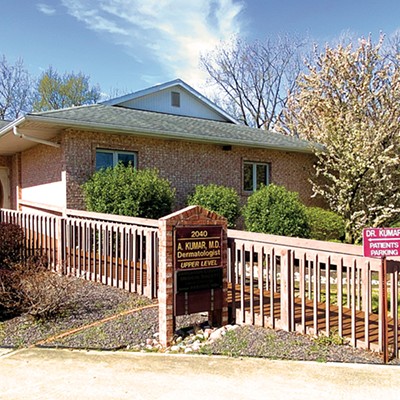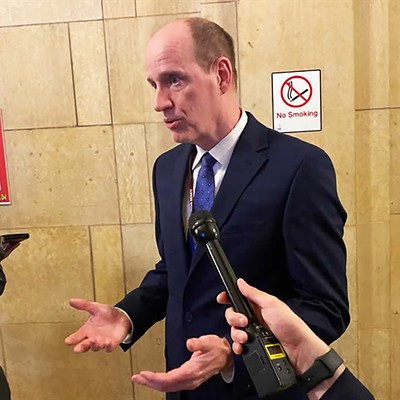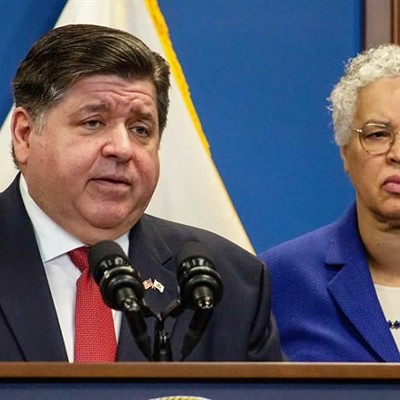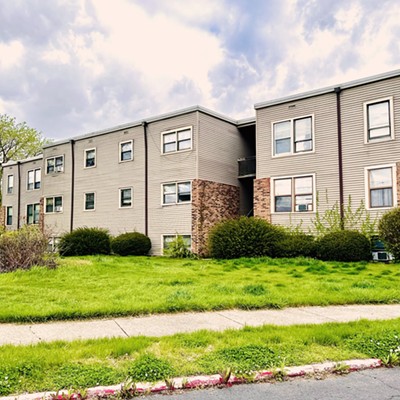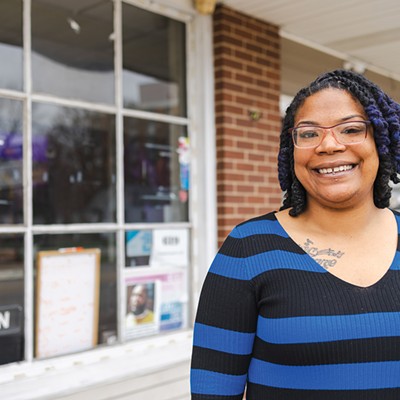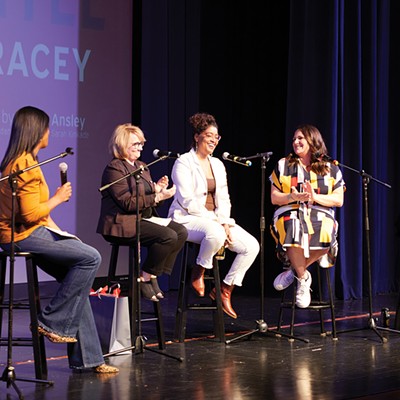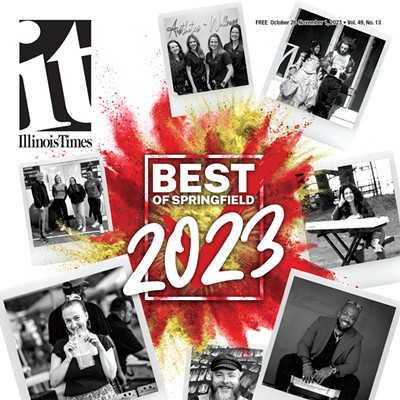White men from small towns.
That's the primary recruiting pool for the Springfield Police Department, which is struggling to have a more diverse workforce that better reflects the community. Although Springfield is 20% Black, only 10% of officers in the department are African American.
Worse yet, not a single Black person holds a supervisory rank in the department, which has been plagued by allegations of racism and bias.
In the city's fire department, the story is even more bleak. Data provided by the city's human resource department indicates that only 5% of firefighters are African American.
"The police department has made some real progress," Mayor Jim Langfelder said. "But the fire department's efforts are just starting. I'm happy to say that the fire department's first-ever Black female is in the incoming class."
About 5% of Springfield firefighters and 13% of police officers are female.
Having first responders who look like the community they serve is beneficial, contends Starr Nutaut, a rookie firefighter who works the city's north side. She recalls a recent medical-services call involving a teen who had just given birth.
"There was a young person there with a female problem, and she didn't want to go to the hospital. She wouldn't listen to anyone. She was embarrassed and thought people would think less of her if she went to the hospital. But I was able to talk to her and she listened. I think it was because she could relate to me as a young female."
And there is the rub. First responders who look like the people they serve have better outcomes, according to Keith Taylor, an assistant professor of criminal justice at John Jay College of Criminal Justice in New York City.
Perhaps no recent incident better illustrates the fraught relationship between first responders and the Black community than the death of Earl Moore Jr.
On Dec. 18, Moore was hallucinating while experiencing alcohol withdrawal and was strapped face-down onto a stretcher by two emergency medical workers employed by a private ambulance service. Moore, a Black man, died of asphyxia as a result of being improperly positioned, an autopsy found.
Paramedic Peggy Finley and emergency medical technician Peter Cadigan, both white, have been charged with first-degree murder. In response to the incident, the city has instituted a trial program that allows firefighters to respond along with EMTs whenever police call for an ambulance.
Allegations of racial bias are not new among the city's emergency service workers.
• A 2022 Illinois Department of Transportation study found that Springfield cops are five times more likely to pull over Black motorists than white ones.
• In April 2022, Aaron Paul Nichols, a Springfield police officer with 18 years on the job, quit after an internal affairs investigation was launched concerning numerous racist and antisemitic messages he posted on social media.
• During a 2020 traffic stop, Springfield police officers opened a sealed urn containing the ashes of Dartavius Barnes' 2-year-old daughter, poured them out and tested them for drugs. Barnes, a Black man, later filed a civil lawsuit against the city of Springfield and the SPD.
"When you have a lack of diversity in your agency, that means that you have a lack of diversity in the decision-making process," said Taylor, a Black man who was a New York City police officer before becoming a professor. "A lack of diversity (affects) how to handle things, based on understanding the culture of the communities that you serve. Diversity gives a better understanding of the language, religious practices and how gender differences are handled.
"And if you also have a lack of diversity, that means that you have an opportunity for negative stereotypes to exist and become instituted into the behavior of the officers when they deal with the community members."
Springfield Ald. Roy Williams, who represents the overwhelmingly Black Ward 3 on the city's east side, said this goes to the heart of the problem.
"I think my constituents feel that when we see people that look like us – they also understand us," he said. "Many of our police officers come from small towns and are not used to being around people of color or policing people of color. They may not understand the culture or haven't gone to school with Black people."
Williams gives high marks to Police Chief Ken Scarlette and his predecessor, Kenny Winslow, for the efforts they have made to recruit Black officers. But he added that despite these efforts, the department is a long way from where it needs to be.
Scarlette said his recruiters are working with civil rights organizations such as the NAACP, Black sororities and fraternities, predominantly Black churches and other community organizations to reach potential candidates. There are also efforts underway to assist interested parties in getting through the process.
The department's physical qualification test for officer candidates has often been a barrier for otherwise qualified candidates. So, a preparation program has been created to help condition individuals for 12 weeks prior to the exam. The training takes place at the Salvation Army gym on the city's east side two nights a week.
Terrence Cypress was one of the people training for the physical exam on a recent evening.
"Lots of people who look like me see the police in a different light. As a Black, minority, young male, I'd be a police officer for everyone – no matter what race you are, what skin color you are, how you look, how you talk, how you walk. I'm going to protect and serve everyone," he said.
Cypress, 21, is a Springfield High School graduate and works in the jail for the Sangamon County Sheriff's Department.
For Megan Aubuchon, who was also taking part in the physical training, said becoming a police officer has long been a dream. The Riverton High School graduate currently works in financial planning.
"I have wanted to be a police officer since before I can even remember. I've got a lot of family who are police officers. I feel the job I'm doing right now serves no purpose to help the community, and I feel like I could be doing more," she said.
She said she had an uncle who worked as a police officer in Riverdale and was killed in the line of duty. Despite this, she still wants to don a blue uniform. She said as a female she will bring a perspective needed in law enforcement.
"I was the charge officer at (HSHS) St. John's (Hospital) on the evening shift, and I was the only female and the youngest person. There were so many times where just having a female there helped. ... It helped de-escalate a lot of things. I pride myself in slowing down and listening to what people have to say instead of just telling them what to do. I think that that's something that women are a lot better with."
Chief Scarlette said the job market remains tight for all employers, not just police departments. An added barrier in recruiting is the apprehension that has developed between many minorities and law enforcement in the wake of the George Floyd killing in Minneapolis.
"I think the biggest key is developing trust and confidence in the community that we serve," he said. "And that goes for all 120,000 residents of this city. I think it's important that we in law enforcement develop that trust.
"And the way to do that is by engaging in conversation and developing relationships in non-law enforcement settings, whether that be community policing or events like Coffee with a Cop or some of the high schools that we find ourselves in. I'm actually going to read to the Early Learning Academy preschoolers. So, I think that things even start at a very young age," said Scarlette.
Firefighter Les Hammers agreed that such events have value, particularly for Black first responders like himself.
"We went and spoke at Dubois (Elementary School) and we interacted with the kids there and I told them my story," he said. "Anytime you can go and educate about what we do and tell them no matter your skin color we can do anything, it can be really uplifting. I think I got more out of it than they did."
Hammers, a Jacksonville native, guarded sex offenders at a Rushville facility before joining the fire department.
Police Officer Tami Russell is president of Police Benevolent and Protective Association Unit 5, the union representing Springfield cops. She said while she supports the department's recruiting endeavors, the bottom line is in order to attract more minority applicants and retain them, the department needs to pay better and provide better opportunities for advancement.
"The last couple hiring classes, we've only had one female. There's usually just one minority in each class, too," she said. Russell added that the classes are made up overwhelmingly of white men from small towns across central Illinois.
"I'm on the recruiting team, and the hard part is that we are so out of balance with ... our pay scale. So that has definitely made it difficult. There is a high need for minorities, in every department. Why wouldn't you go where you could get paid more?"
Russell noted a Hispanic sergeant is the only minority in a supervisory role in the department. She added females fare a little better with one sergeant, one lieutenant and a commander.
"Minority members come to me (about this) and I get it. ... Aesthetically, it does not look good. You can see in their eyes where it's frustrating. And I can certainly appreciate that," she said.
Fire Chief Brandon Blough said sometimes he gets pushback from people in the community on the subject of diversity.
"They say all of the time, 'If my house is on fire, I don't care what demographic comes and saves me.'"
But such remarks really miss the point, Blough said. It is important for youngsters to have role models who look like them.
"Kids need certain professions to look up to. It's important they have something to aspire to. My job is a fireman, so I want to see us provide the right type of people that these kids can look up to," he said.
Scott Reeder, a staff writer for the Illinois Times, can be reached at sreeder@illinoistimes.com.

